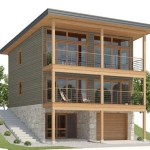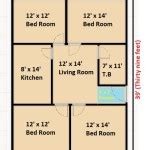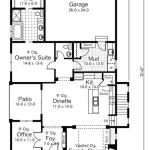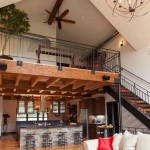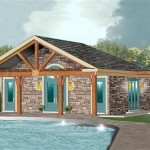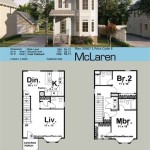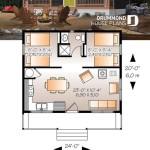Decoding the 1 Bedroom Apartment Floor Plan With Dimensions
Understanding a one-bedroom apartment floor plan, specifically one including dimensions, is crucial for anyone looking to rent or buy. These plans provide a detailed visual representation of the space, allowing potential residents to assess the layout, identify potential furniture placement challenges, and generally determine if the apartment suits their lifestyle needs. The presence of dimensions elevates the floor plan's utility, providing precise measurements that enable accurate estimations and prevent costly mistakes related to furniture purchases and moving logistics.
This article aims to explore the key elements of a 1-bedroom apartment floor plan with dimensions, highlighting their significance and offering guidance on how to interpret and utilize the information effectively. We will delve into different layout variations, common dimensions to look for, and the practical applications of having accurate measurements at one's disposal. Ultimately, a comprehensive understanding of these floor plans empowers individuals to make informed decisions about their living spaces.
Key Point 1: Essential Components of a 1 Bedroom Apartment Floor Plan
A well-defined 1-bedroom apartment floor plan typically showcases several core components rendered with precision. These components include, but are not limited to, the bedroom, living room, kitchen, bathroom, and any additional spaces such as a balcony, closet, or storage area. Each of these spaces should be clearly demarcated with distinct lines and labeling for easy identification.
Beyond the spatial layout, the inclusion of architectural features is paramount. This incorporates the representation of walls (both interior and exterior), doors, windows, and any built-in fixtures like kitchen counters, sinks, and bathroom vanities. These elements contribute significantly to the overall understanding of the apartment's structure and available space. The consistent use of standardized architectural symbols ensures that the floor plan can be universally understood regardless of the designer or location.
The inclusion of dimensions is what truly elevates a floor plan from a simple schematic to a powerful decision-making tool. Dimensions are usually presented as linear measurements, such as feet and inches or meters and centimeters, and are applied to various aspects of the apartment. This includes the length and width of each room, the size of doors and windows, and the distances between key architectural features. The dimensions should be clearly and accurately labeled and consistently applied throughout the plan to avoid misinterpretations.
Furthermore, the orientation of the apartment is often indicated on the floor plan, typically with a north arrow. Understanding the apartment's orientation can be beneficial in predicting the amount of natural light the apartment will receive throughout the day. This is particularly important for those who value sunlight or have specific needs for lighting due to plants or other sensitivities.
Finally, it is important to note the scale of the floor plan. This will usually be indicated in the plan’s details and is used to accurately interpret the dimensions of the apartment. For instance, a scale of 1:50 will indicate that every unit of measurement in the plan corresponds to 50 units of measurement in the real world.
Key Point 2: Common 1 Bedroom Apartment Layout Variations and Their Dimensions
One-bedroom apartments can come in a variety of layouts, each with its own set of advantages and disadvantages. The most common types include the linear layout, the open-concept layout, and the L-shaped layout. Each layout affects how one can use the space within the apartment. Each of these has inherent dimensional features that distinguish it from the others.
The linear layout is characterized by a rectangular shape with rooms arranged in a straight line, often along a hallway. In such layouts, the living room, kitchen, and bedroom are connected sequentially. A typical dimension for a linear layout might involve an overall length of 40-50 feet and a width of 15-20 feet. The bedroom might measure approximately 10 feet by 12 feet, while the living room could be around 12 feet by 15 feet.
Open-concept layouts emphasize a larger, more flexible living space by combining the living room, dining area, and kitchen into a single, interconnected area. These layouts often create a sense of spaciousness and are ideal for entertaining. The overall dimensions of an open-concept area could be around 20 feet by 25 feet, with the bedroom typically ranging from 10 feet by 10 feet to 12 feet by 12 feet. The bathroom is typically a separate enclosed area.
The L-shaped layout involves a configuration where one section of the apartment extends at a right angle from another, creating a more defined separation between the living area and the sleeping area. This can result in more privacy for the bedroom. Dimensions for this layout can vary significantly, but a typical L-shaped apartment might have a living area of 15 feet by 18 feet and a bedroom of 11 feet by 13 feet. The "leg" of the L can be more or less extended depending on the overall square footage.
Beyond these common layouts, other variations can include alcove studios (where the sleeping area is partially separated from the living area) and duplex apartments (with two floors). Dimensions for these specialized layouts will naturally vary widely and require close examination of the specific floor plan. Understanding the general dimensional attributes of these common layouts allows prospective renters or buyers to quickly assess the suitability of a given apartment based on their spatial needs and style preferences.
When considering dimensions, one must also account for the ceiling height, which is generally not included in standard floor plans. However, low ceilings can greatly affect the feeling of spaciousness within an apartment. Standard ceiling heights range from 8 to 9 feet, with higher ceilings often found in more modern or luxurious apartments. Always consider this when looking at the floor plan.
Key Point 3: Practical Applications of Floor Plans with Dimensions
The availability of dimensions on a 1-bedroom apartment floor plan offers numerous practical advantages for potential residents. Foremost among these is the ability to accurately plan furniture placement. By knowing the dimensions of the rooms and the furniture one intends to bring, it becomes possible to determine whether the furniture will fit comfortably and how best to arrange it within the space.
This planning process helps to avoid the costly mistake of purchasing furniture that is too large or unsuitable for the apartment. Furthermore, it allows one to optimize the use of available space, ensuring that the apartment feels both functional and aesthetically pleasing. By creating a scaled furniture layout based on the floor plan, one can visualize different arrangements and determine the most efficient use of the space.
Another crucial application is in assessing the apartment's suitability for specific needs. For example, families with children might need to verify that there is sufficient space for a play area or a crib. Individuals who work from home will want to ensure that there is adequate room for a home office setup. The dimensional information on the floor plan allows one to objectively evaluate whether the apartment meets these specific requirements.
Floor plans with dimensions are also invaluable when planning and executing a move. They allow one to estimate the amount of packing materials needed, determine the size of the moving truck required, and coordinate the placement of furniture during the move-in process. This can significantly streamline the moving process and minimize stress. Knowing the dimensions of doorways and hallways is vital to ensure that larger pieces of furniture can be moved in and out of the apartment without damage.
Beyond furniture and moving logistics, floor plans with dimensions can aid in planning renovations or improvements. If the resident intends to repaint walls, install new flooring, or make other cosmetic changes, the dimensions provide the necessary information for calculating the amount of materials needed and estimating the cost of the project. This allows for more accurate budgeting and project management.
Finally, the floor plan can often be used to help with setting up utilities. For instance, it can show the location of electrical sockets and allow one to plan out where to install lighting or where to plug in appliances. The location of water pipes and heating vents are also often clearly available which can assist in the set-up or improvement of utilities.
In summary, a 1-bedroom apartment floor plan with dimensions is a versatile tool that empowers individuals to make informed decisions, plan effectively, and optimize their living space. Its practical applications extend from furniture placement and moving logistics to assessing suitability for specific needs and planning renovations. By understanding and utilizing the information provided on these floor plans, individuals can avoid costly mistakes, minimize stress, and create a living environment that perfectly suits their needs and preferences.

One Bedroom Apartment Home Style 1a Ada Vantage On The Park

1 Bedroom Apartment Plan Examples

One Bedroom Apartment Floor Plans Ovation 309

One Bedroom Apartment Floor Plans Ovation 309

1 Bedroom Apartment Plan Examples

Pin Page

One Bedroom Standard Floor Plan Apartments In M Massachusetts Princeton Crossing

One Bedroom Style F Waterfront Apartments

X3 1 Bedroom Apartment Cincinnati Encore Apartments

Pin Page
Related Posts

